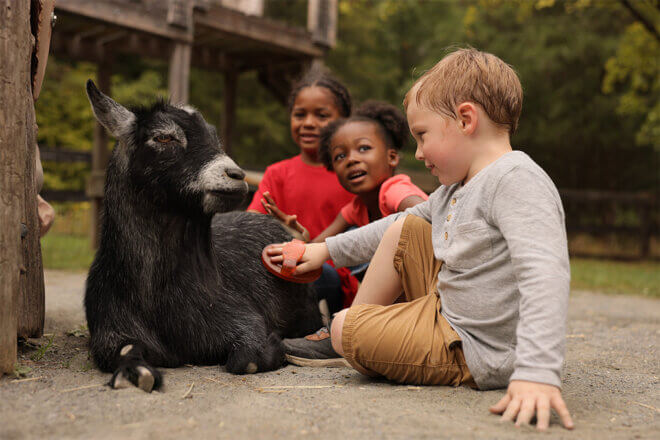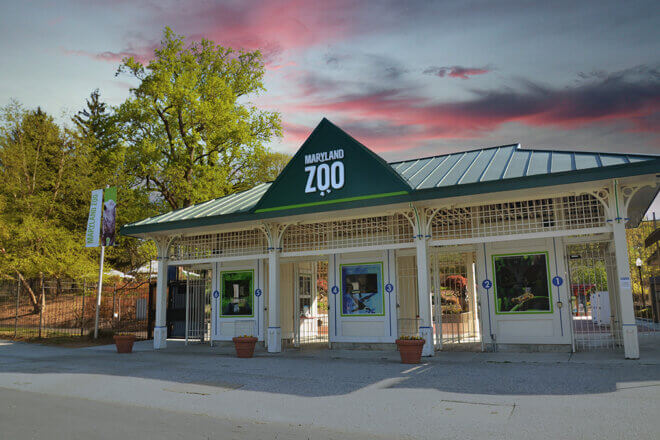Although it may not be obvious at first glance, Mt. Washington Pediatric Hospital and the Maryland Zoo have quite a bit in common. Both organizations have been part of the fabric of Baltimore for a long time – the hospital recently celebrated its centennial, while the Maryland Zoo is getting ready to mark its 150th birthday. The two organizations are also aligned through their deep, driving sense of mission. And 12 years ago, the two organizations launched a multifaceted collaboration.
As hospitalized children prepare to transition back to their homes and communities, teaching them how to acclimate and adapt to the world around them is key. One way MWPH accomplishes this is through regular community re-entry outings – and the zoo is a popular destination.
“Visiting the zoo offers a unique experience for us from a functional rehabilitation standpoint,” said Lindie Ashman, manager of child life and therapeutic recreation at MWPH. “It can give children a chance to navigate different environments, from hilly areas to gravel surfaces to crowded exhibits.”
Trips to the zoo help MWPH’s patients learn how to problem solve, so when they go home they can navigate their own world, and adapt in ways that empower them to just be kids and engage in activities and adventures.
When the pandemic hit, MWPH had to put its in-person zoo visits on hold. The Zoo to You virtual field trip program featured tour guides and volunteers at the zoo, giving MWPH’s hospital-bound children the zoo experience virtually. Even after the pandemic, Zoo to You brings the zoo experience to children who can’t safely leave the hospital. The events introduce animals, explaining what makes them special and why they’re important.
“We offer lots of content about animals with different abilities. Highlighting how animals differ from each other, and what makes those special abilities unique, connects with the lived experience of patients who may be differently abled or who may have restrictions due to an illness or injury,” said Mike Evitts, senior director of communications at the Maryland Zoo.
Possibly the most tangible result of the partnership has been the hospital’s sponsorship of the popular goat corral in the zoo’s farmyard area. “It’s the only place where you can actually touch an animal at the zoo, so it’s a big hit with children of all ages,” Evitts noted.
For 11 years, MWPH has also been a proud sponsor of the Zoo’s annual Zoo BOO! festival. Staff and volunteers spend the weekend sharing information about the hospital’s work and resources as well as sponsoring the children’s costume contest.
Behind the scenes, the zoo’s innovative approaches to rehabilitation are designed to maximize well-being. “We work with state and government agencies to rehabilitate animals who were injured in the wild. And for the animals in our care, our team of animal behaviorists designs habitats to encourage natural behaviors, challenge animals with puzzles, and provide the full spectrum of well-being for the whole animal,” Evitts explained.
“Our children love learning how each animal receives special care, some needing extra support to stay healthy and active – just like them! Our children have opportunities to bond with the animals and feel less isolated when they learn that many animals need medication, extra care, and rehabilitation, too,” Ashman said. “These experiences help to normalize the hospital experience for our patients and equip them to go back into the world.”







Share this article